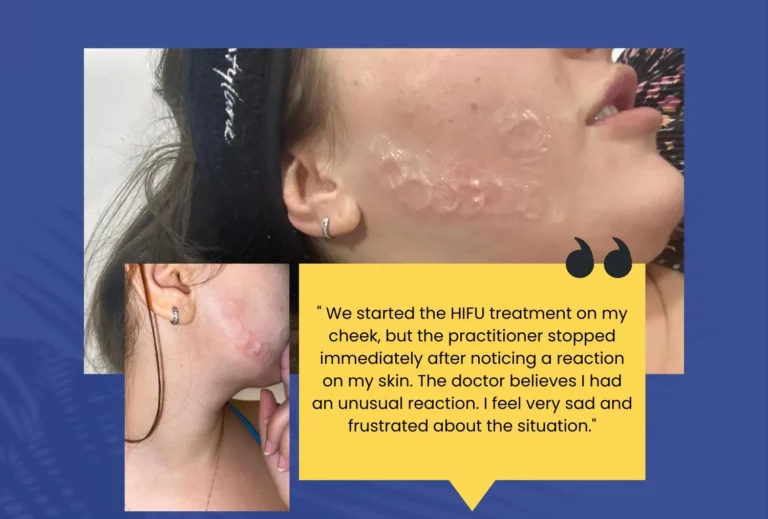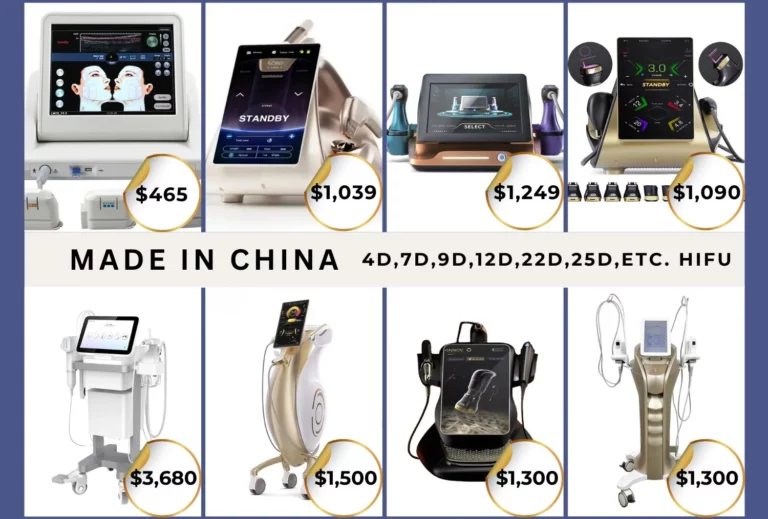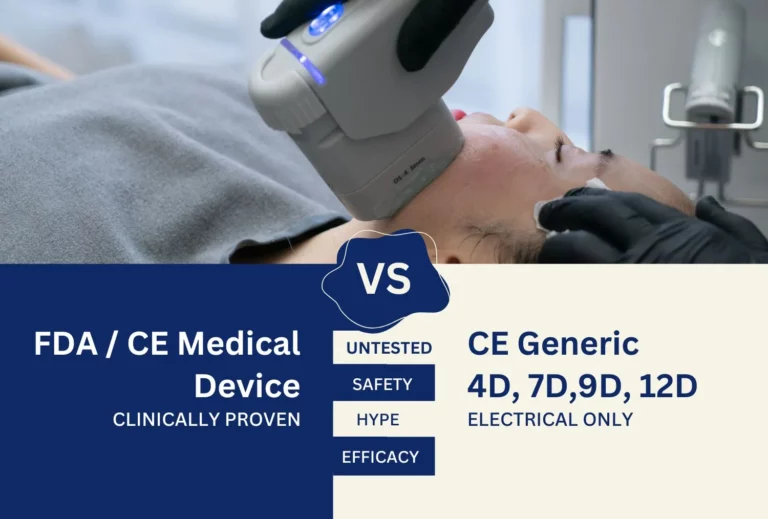As we age, after significant weight loss or as a result of hormonal and physiological changes, the skin gradually loses its elasticity and firmness. In addition, some fat deposits, especially in areas such as the abdomen, thighs, arms and knees, prove resistant to diet and exercise. High‑Intensity Focused Ultrasound (HIFU) is established as a non-invasive method for tightening loose skin and reducing local fat.
How does HIFU affect the skin and fat cells?
HIFU technology uses focused ultrasound energy that reaches different layers of the skin and subcutaneous tissue without disturbing the epidermis. The depth of penetration depends on the specific area and purpose of the procedure:
- 1.5 mm to 4.5 mm – for collagen stimulation and skin tightening
- 6 mm to 13 mm, now up to 18 mm – for breakdown of fat cells (in areas with subcutaneous fat)
At each focusing point, thermal coagulation is created, at which the temperature reaches 60-70°CThis causes the following effects:
Skin tightening
- Immediately shortening of collagen fibers
- Long-term neocollagenesis (synthesis of new collagen and elastin)
- Improved skin structure and elasticity
Degradation of fat cells
- Ultrasonic energy destroys adipocytes (fat cells)
- Fat is eliminated naturally through the lymphatic system
Areas of application and results
HIFU is effective for moderately loose skin and localized fat deposits. Common treatment areas:
- Abdomen
- Inner and outer thighs
- Headquarters
- Above the knees
- Hands
- Back fat ("bra fat")
Expected results:
- Gradual improvement within 2 to 3 months
- Expressed lifting and tightening
- Circumference reduction in the treated area
- Smoother and tighter contour
- Sustainable result: average duration up to ~18 months, depending on individual factors. Results vary by age, skin condition and lifestyle.
Suitable choice for:
- People with mild to moderate skin laxitywho are looking for visible tightening without surgery
- Customers with local fat (belly, buttocks, thighs), resistant to diet and exercise
- Women and men who stay in shape with normal to slightly elevated body mass index (BMI ≤ 30)
- People no active skin infections, kidney or liver disease
Safety and recommendations
- To be carried out by trained specialists with medical experience
- The device used must have CE/FDA certificates and option for real-time ultrasound visualization (e.g. Ultherapy) .
- Avoid if you have hormonal problems, metal implants, pregnancy, or severe chronic conditions.
HIFU vs. invasive methods
HIFU cannot replace surgical liposuction or facelift, but it has a number of advantages:
| HIFU | Surgical intervention |
|---|---|
| Non-invasive procedure | Invasive with recovery period |
| Without anesthesia | Anesthesia is required. |
| Without scars | Scars after surgery |
| Almost no recovery | Recovery 1-2 weeks |
| Gradual results | Immediate effect |
Clinical evidence
- Ko et al., 2017 – randomized clinical study with 32 participants from Korea (face, abdomen, thighs): significant improvement in skin elasticity – measured with Cutometer at 4 and 12 weeks after the procedure, without long-term side effects. ResearchGate
- Azin Ayatollahi et al., Lasers Med Sci, 2020 – meta-analysis with 477 patients: average effectiveness score 2.7/5, moderate pain threshold (~4.2/10), no complications such as hyperpigmentation. PubMed
- Haykal et al., Aesthetic Surg J, 2025 – systematic review of 45 clinical studies: HIFU shows 18–30 % improvement in skin laxity and body contours. ResearchGate+PubMed
- AIUM (American Institute of Ultrasound in Medicine) confirms that HIFU is safe and effective in breaking down fat well tolerated, and that should not be applied without appropriate qualification. ResearchGate
Conclusion:
HIFU directs ultrasound energy into the deep layers of the skin and fatty tissue. In areas with localized fat, this leads to the destruction of fat cells, and in the dermis it stimulates the formation of new collagen. Thus, the procedure simultaneously helps reduce volume and improves skin elasticity, resulting in a tighter and more defined contour. HIFU is useful, but the real and long-lasting results come when combined with healthy habits – exercise, a balanced diet and an active lifestyle.



